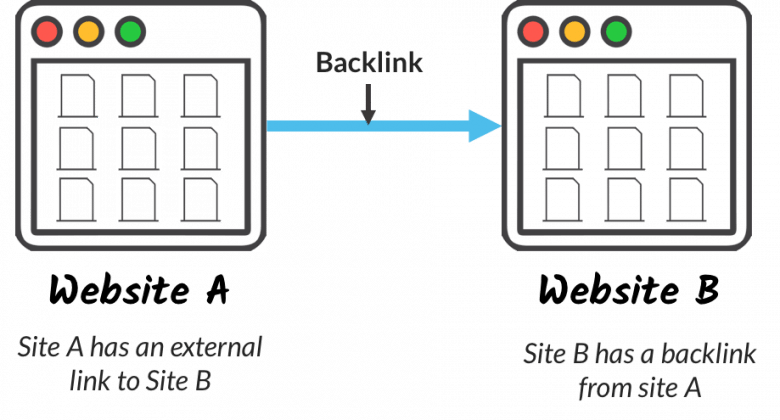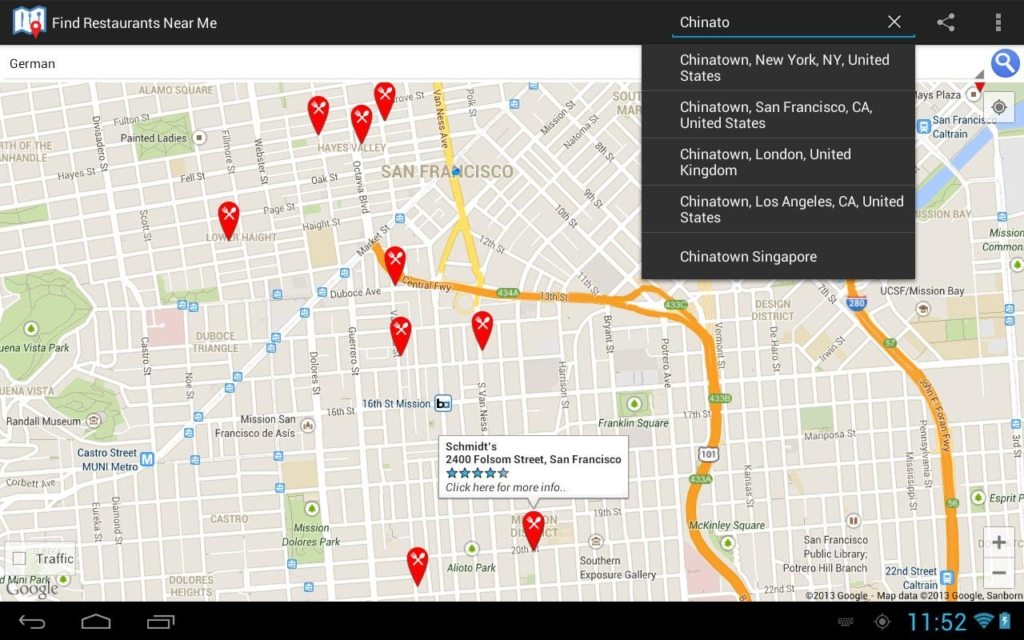These days, setting up a website to showcase your work is crucial, particularly for digital creatives. Portfolio pages act like business cards, resumes, and initial conversations with potential clients all rolled in to one. But if all you’ve done is set up your page (even if it’s great) it’s probably not generating you many clients. We don’t mean potential clients you send your link to. Rather, potential clients who don’t know you, who might be searching for a designer (or developer, or writer, or artist) while you’re asleep at night or from around the world. We’re talking potential clients you haven’t even conceived of, personally reached out to, or even know anything about. We’re talking about generating interest for your business from the hub of where people look for solutions to their problems: Google.
What we’re going to be talking about below are practical tips for boosting your visibility when people search for keywords on Google, otherwise broadly known as SEO (search engine optimization). In particular, we’re going to talk about ways in which you (as a designer, or developer, or freelancer, or creative of some sort) can rank on the first page of Google for a number of important queries: queries such as “[Your Name] – [Your Profession],” “[Your Career] Agencies in [Your Town]”, “Top [Your Career],” among other terms. For the sake of simplicity we’re going to provide examples about ranking an imaginary designer portfolio site, though these tips could easily apply to a wide range of other creative fields in which individuals create portfolio sites.
Understand the Building Blocks of SEO

First, what is SEO? As previously mentioned, SEO stands for Search Engine Optimization, and is the process and collection of best practices through which websites can gain “free” traffic from search engines. By free we mean placement as a non paid result (a non-advertisement) when someone queries a term in Google, Bing, Yahoo, or other search engines. While traffic to your site is also good, we’re also talking about how to get high-intent traffic. That is, visitors with a high likelihood of wanting to interact with your online offerings and proceed down your sales funnel. Two general categories of SEO are detailed below: on-page SEO, and off-page SEO.
On-page SEO involves many aspects of your site that are directly under your control. An aim of search engines is to provide searchers with results relavent to their query, and to provide the most relavent and highest quality results possible. Search engines achieve this through sending out crawlers across the web which chronicle changes to websites, or the creation of new content. Crawlers look for many indicators that are often the product of on-page SEO. Indicators that help to answer questions such as “what is this site about,” “does this site provide quality content,” “is this site usable,” “how does this site stack up against competition,” and ultimately “who is interested in this site?” A cursory list of on-page indicators that we’ll explain in more detail in examples below includes things like keyword density, “freshness” of content, number of steps before a user is prompted to “buy” (too little is bad), whether or not the site can be crawled, how quickly pages load, whether the site is organized coherently, whether meta tags and page titles match content, and whether deceptive SEO (called “black hat”) tactics are used. On-page SEO is manageable through the way you build your site, and the way you structure your content.
Off-page SEO involves search engines’ opinion of the quality of your site and content based on cues provided by other sites, internet users, and social media. One way to look at off-page SEO is that it aims to present your site well to a search engine seeking to answer the question “is this site an authority on a topic?” as judged by it’s peers (other sites) and visitors. A basic list of indicators that search engines look for in answering this question includes the number of links to the site (called backlinks), the quality of sites linking to the site, whether or not the text in links back to your content matches the topic of your page, whether or not your site has been publically “spammy” in marketing attempts, whether users stay in your content or quickly “bounce” away, what location or language your site is catering to, and how well you content or site does on social media. Off-page SEO is predominantly determined by how your site fares in its interactions online. While how a site fares among other sites and viewers many times comes down to the quality of your content or service relative to peers, it often is more centered on outreach strategies, avoiding “black hat” SEO,
Focus on Backlinks

When search engines appraise the quality of your site, one of the primary elements they look at is the number and quality of backlinks. As the name suggests, backlinks are links “back” to your site from another site. Figuratevely speaking, search engines percieve links to locations on your site as votes of confidence in the quality of your content or services. For example, let’s say your portfolio includes a piece of content on the best design techniques for emulating mid-century modern travel brochures. If a prominant design blog were to publish a link to this content in one of their own guides, then search engines would view this as an endorsement of the quality and authority of your content (and ultimately, your site).
Another concept related to backlinks is anchor text. Anchor text is the text that actually holds a link. Like the phrase how to rank your portfolio higher on Google. Anchor text on other domains is essentially a vote that your domain or content is a good match for queries composed of the keywords in the anchor text. So if someone were to link to a piece of your content as shopping center in Seattle a search engine interprets your your domain or post as a good match for the query ‘shopping center in Seattle.’ One note that we’ll jump into in more detail in the “black hat” SEO section is that due to once prevalent deceptive marketing tactics, Google penalizes unnaturally high concentrations of exact match keywords. Boiled down, you want some anchor text for keywords you’re trying to rank in. But if a sizable percentage of all of your backlinks have identical anchor text, you might be flagged for being “spammy.”
Avoiding being “thin”

Search engines seek to reward sites that contribute to their online community, that have valuable content publicly available and that have “stickiness” when users interact with them. One way in which search engines gauge whether sites are attempting to contribute to their communities online is to look at how “thin” a site is. For our purposes a “thin” site is a site with a great deal of low quality content that doesn’t add value for visitors, or a site with very few steps before attempting to monetize a visitor. For example, a designer portfolio page that just has a few examples of work and then a “schedule a consultation” button would probably be judged as thin. Alternatively a designer portfolio with an active blog teaching design techniques and with an active readership would be less likely judged as “thin.”
Content Content Content

At the end of the day, our first two tips (as well as a number that follow) all hinge on two thing: quality content and a plan for distributing that content. Though many tactics differ by industry, most backlinks are directed at quality resources, opinions, reports, presentations and other informative content that interests a community. For designers content may include professional advice, tutorials on design techniques, quality designs (such as infographics), and — if it’s in your skillset — video or other multimedia content. It should be noted that for the purposes of performing SEO on your site, that social media engagement is a positive sign, but has a debatable effect on page rank. For the purposes of SEO, social media marketing should be viewed as one of many ways to distribute content. Other content distribution methods include the releasing of press releases, signing up for syndication engines, reaching out to interested parties directly, finding broken backlinks you may replace on other’s sites, and generally engaging with the community in which you’re trying to build a site. Though there are many on-site SEO benefits to having your own original content, a recently popular method of gaining backlinks is to offer to write a free guest post for another site in your vertical and including a link back to your site in your post.
Focusing on Keywords

We’ve already mentioned that anchor text an important hint to search engines regarding what keywords your site should rank for. But what can you do on your site to make sure search engines understand your topic? First and foremost, you should focus on amplifying certain keywords on your site, and making sure each piece of content targets a distinct subset of keywords you are targetting. There are many keyword research tools online, free and paid. Common features of these tools include the ability to compare your site to competitors (seeing what keywords they have and you don’t, or visa versa), the ability to see how much competition there is for certain keywords, and to see where you show up in search results for certain keywords already. These tools can also help you to identify keywords related to those you already rank for that might provide additional opportunity and traffic. Amplifying keywords is a rich subject that we could go into in much greater detail. But at its simplest amplifying keywords involves a seeking a density of related keywords in your content. For example, if you’re writing a piece about the best design tools, you should have the phrase (and phrases related to) “the best design tools” in your content several times. Additionally, the use of semtantic HTML when posting allows you to provide additional cues for search engines. By semantic HTML we mean utilizing header tags, html titles, emphasized text, and links to pull out keywords you’re trying to target. For example, in your “best design tools” piece of content a section header including the words “best free design tools” amplifies they keyword “best design tools” that you’re trying to emphasize. One other common way to amplify keywords is to choose a descriptive URL slug for your post. For our example this might look like the following: https://www.yoursite.com/features/best-web-design-tools.
Showing up for Location-Based Keywords

Location-based keywords are often the bread and butter of small businesses utilizing SEO. Sites that focus on location-based keywords don’t compete as much with larger national brands, and seek to show up in Google’s increasingly sophisticated location-based searches. For a design portfolio a few initial steps for optimizing location-based SEO include signing your business up for business directories and including a link to your site and your address. Additionally, you can signal with keywords by posting a few pieces of content that are location specific. For our example of a design portfolio this could look something like pieces of content like “best design firms in [your city],” “the best design meetups in [your city],” “design landmarks in [your city]” and so forth. At the very least, some coincidence between city-based keywords and design based keywords signal your position as a quality answer to location-based queries in your industry.
Usability: Page Speed and Responsive Design

Some on-page aspects of SEO are very cut and dry. You’re either doing them, or you aren’t. And you can find out how Google percieves these aspects of your site with tools they provide. Page load speed and whether or not your site is responsive are two such elements of SEO. Google’s Pagespeed Insights tool allows you to check your site for how quickly Google sees your pages loading. If there are common issues affecting your page load speed, the tool provides some potential solutions to these problems. So why is load speed considered part of the key to answering whether your site is a quality search engine result? Because fast pages are more usable, and engagement with sites lowers if they are particularly laggy. Google seeks to provide pages that not only have the most pertinant and valuable information, but also provide good experiences. The same can be said for a site that is responsively designed. Google’s Mobile-Friendly Test allows webmasters to determine whether Google percieves their site as “mobile-friendly.” Similarly to how page speed factors into user experience, so does whether or not your page renders clearly on devices of all screen sizes. If you’re a developer as well as designer, obtaining a decent page speed and responsive design for your site shouldn’t be too hard. If you aren’t, there are many pre-built modern themes that can be used on many major content management systems including Drupal, WordPress, and Joomla. Furthermore, most front-end frameworks are now opimtimized for speed and most screen sizes.
Avoiding Black Hat SEO tactics

The old saying “if it seems too good to be true…” is definitely pertinant in the world of SEO, and could be a good general rule of thumb for avoiding black hat seo tactics. Services offering to sell you hundreds of backlinks, or direct constant traffic to your site likely utilize link farms, click farms, and botnets to deliver their services. These are definite “no-no’s” when it comes to dealing with search engines, and a great way to get your site flagged for review or even excluded from Google’s search rankings. Additionally, spammy outreach efforts such as blasting your links repetitively in many comment boxes can also get your site flagged. The name of the game for dealing in white hat SEO is to seek to engage in high quality conversation with your vertical and community. If you seek to provide high quality content and market it without taking shortcuts, your site will excel at SEO. And if you try to cut corners, your site may well get banned from the largest traffic source online.

